By Lt. Col. Patrick Suermann, Ph.D., P.E., F.ASCE, F.SAME, USAF (Ret.), Col. Paula Loomis, Ph.D., AICP, LEED AP, F.AIA, F.SAME, USAFR (Ret.), Capt. Dave Obermeier, P.E., PMP, CEM, CFM,M.SAME, USCG, Ben Roth, AIA, and Jeff Sims, P.E.
The research facilities and infrastructure utilized by the United States Antarctic Program face many challenges, chief among them are their age as well as a harsh environment and remote location that makes maintenance and upgrades costly and complex.
This consensus has led to a need for modernization and development of new infrastructure that can support research in a more sustainable and efficient manner, while also providing logistics and operational facilities that are efficient and can accommodate multiple purposes.
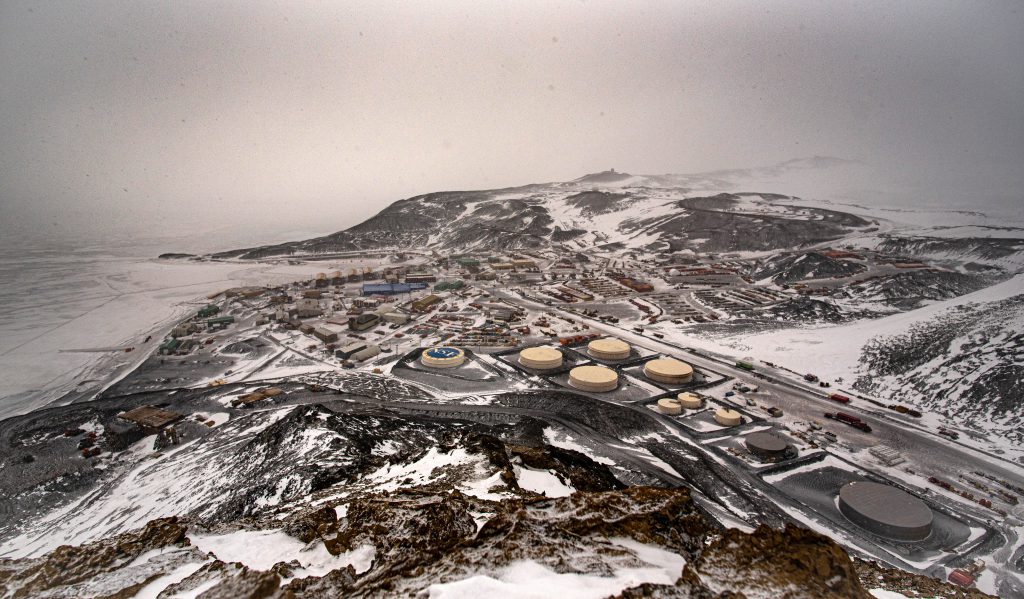
The Antarctic Infrastructure Modernization for Science (AIMS) is a significant step toward achieving this goal and ensuring that the world’s southernmost continent remains a vital hub of scientific research for years to come. The overall project involves replacing and modernizing outdated facilities, improving living conditions for researchers and support staff, and making the stations more energy and operationally efficient, sustainable, and resilient. AIMS will enable scientists to conduct research safely and more efficiently, while also reducing the impact of human activity on the fragile Antarctic ecosystem.
AIMS represents a new horizon for scientific research in Antarctica. Its successful implementation will have significant positive implications for the advancement of scientific knowledge, environmental sustainability, and international cooperation.
Massive Undertaking
Originally built in 1956, the existing facilities and infrastructure of the United States Antarctic Program are no longer able to support the growing demand for scientific research. AIMS is focused, specifically, on upgrading and modernizing McMurdo Station, the largest research station on the continent and located on the southeast of Antarctica. Research conducted at the installation has helped the scientific community better understand everything from climate change to the evolution of life on the planet.
Approved in FY2019 and funded by the National Science Foundation (NSF), AIMS consists of three overarching objectives: enhance the safety, efficiency, sustainability, and resilience of Antarctic Program operations; improve the quality of life for researchers and support personnel; and enable cutting-edge scientific research in Antarctica. The project also is aimed at reducing the environmental impact of ongoing research activities.
Carrying out these interrelated objectives is a massive undertaking that will require the collaboration of multiple stakeholders: owners, contractors, engineers/architects, and scientists on-ice. Initially, AIMS was expected to cost around $400 million and take about seven years to complete, but COVID-19 impacts triggered a delay of approximately two years early in the project. The ambitious plan and the significant investment in infrastructure, equipment, and technology had to be adjusted to respond to the pandemic.
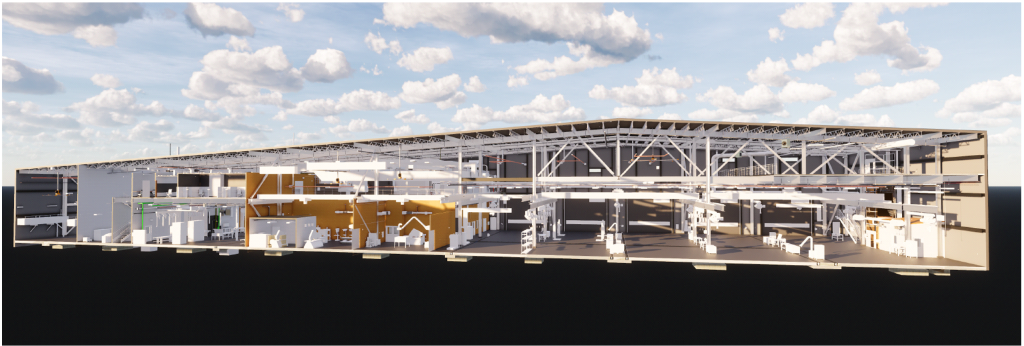
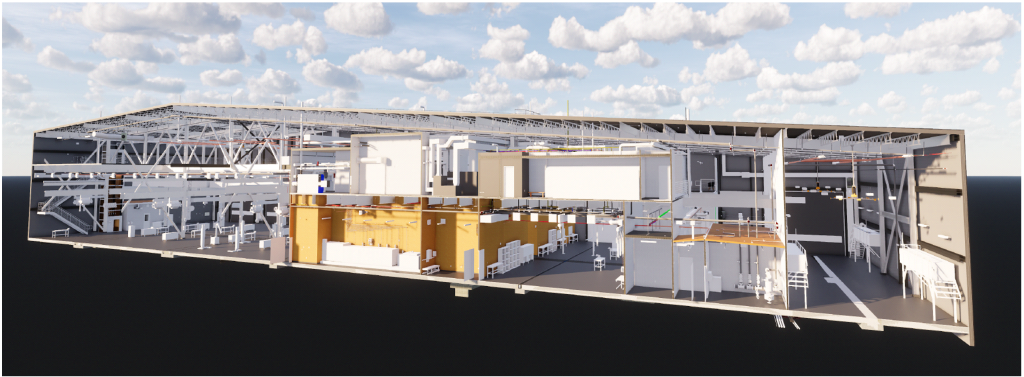
Overall, AIMS’s scope was adjusted from five projects to two: a new 285-bed lodging facility; and the Vehicle Equipment Operations Center (VEOC), which will serve as the main maintenance and repair facility for McMurdo’s varied and unique fleet of vehicles. The VEOC will be located uphill from the rest of the station, where cargo is currently stored,while the new lodging facility will be built on a site overlooking Winter Quarters Bay. AIMS represents a new horizon for scientific research in Antarctica. Its successful implementation will have significant positive implications for the advancement of scientific knowledge, environmental sustainability, and international cooperation.
Planning for Efficiency
As the largest of the three U.S. stations in Antarctica, McMurdo serves as a key logistical hub for NSF. Beginning in 2012, under the contract to the Antarctic Support Contractor at the time, OZ Architecture developed a master plan, programming planning, and building design for the complete transformation of this community of roughly 1,200 researchers. The master plan effectively consolidates and co-locates essential functions into fewer, more efficient buildings.
With a focus on improving resource allocation, logistical efficiency, and wellness, the master plan calls for several interconnected buildings to replace over 100 aging and haphazardly located structures. The buildings were purposefully designed to be as flexible as possible and to accommodate multiple purposes. Due to the extreme Antarctic environment, the facilities include sustainability features such as a lower skin-to-volume ratio spend in the harsh elements. Because of logistical considerations, including limits on vessel capacity to the continent and offloading protocols, construction materials and equipment were carefully planned to ensure that they could be stowed compactly on ships and efficiently stored on land.
Originally built in 1956, the existing facilities and infrastructure of the United States Antarctic Program are no longer able to support the growing demand for scientific research.
In developing the master plan, OZ Architecture engaged with four major NSF stakeholder groups to form the McMurdo Station Programming Plan. These groups consisted of NSF members, major sister government stakeholders, the science community, and the Antarctic Support Contractor.
With design having started in 2015, AIMS is currently expected to continue through to completion in 2025. The timeline for the project is split into several phases, each with its own set of goals and objectives. The first phase was design, which followed the recommendations of the recently completed master plan. These design efforts were driven to a degree by completed projects upon which constraints and opportunities were based—in particular the new power plant and a water treatment facility that had already been constructed and were operational. The next phase, construction, began in earnest in 2019 when the work was authorized by the National Science Board and approved for funding. This phase is focused on construction of new facilities and the utilities to support them.
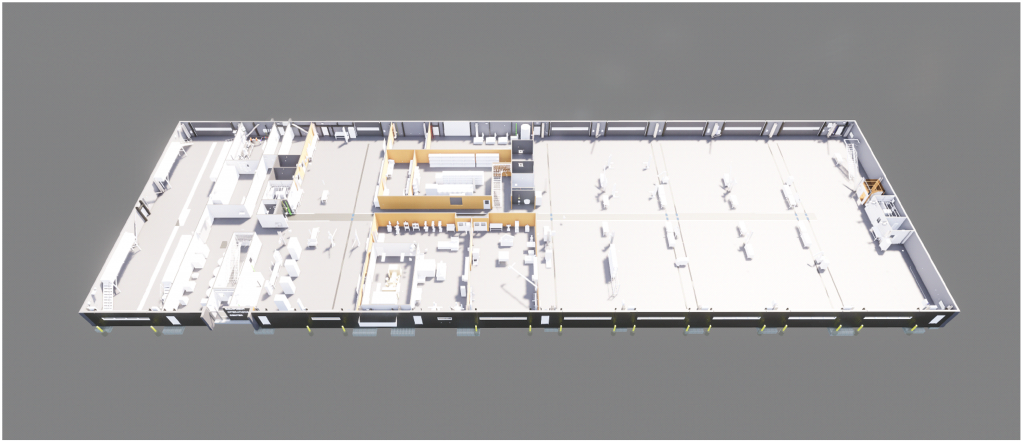
Harsh, but Delicate
While the benefits of AIMS are clear, there are also several risks, with perhaps the biggest challenge the remote and harsh environment of Antarctica. Working in such extreme conditions requires specialized equipment and highly experienced personnel, both of which can be expensive and difficult to transport. Just getting crews to the ice requires significant planning and logistical considerations. Ski-equipped aircraft and cold-proofed heavy construction equipment are needed to enable operations. Additionally, the project requires extensive and thoughtful advanced planning to ensure all necessary materials and equipment are on site when needed and in the condition required.
Another significant challenge for AIMS is preventing potential adverse impacts on the surrounding environment. This includes the release of wind-carried construction material, byproducts of demolition such as insulation beads, or even sawdust. Special measures must be implemented during planning and construction to prevent an environmental release. Antarctica is an incredibly fragile ecosystem. Any changes to the environment could have unintended consequences. To mitigate these risks, the project is subject to ongoing and rigorous environmental monitoring in addition to peer-reviewed environmental assessments. All construction will be carefully monitored to ensure that it does not harm the surrounding environment.
The impact of the coronavirus also strained the original construction schedule. A consequence of that setback meant there needed to be a re-baselining effort that resulted in the significant scope and schedule adjustments that narrowed the project to the VEOC and the new lodging building. And although these two facilities have been delayed as well, they are highly critical assets that will contribute to a more energy and operationally efficient station when they are complete.
The Office of Polar Programs has undertaken a multi-step process to establish protocols to manage the continuing risks presented by COVID-19 to deployers to the ice, including construction workers.
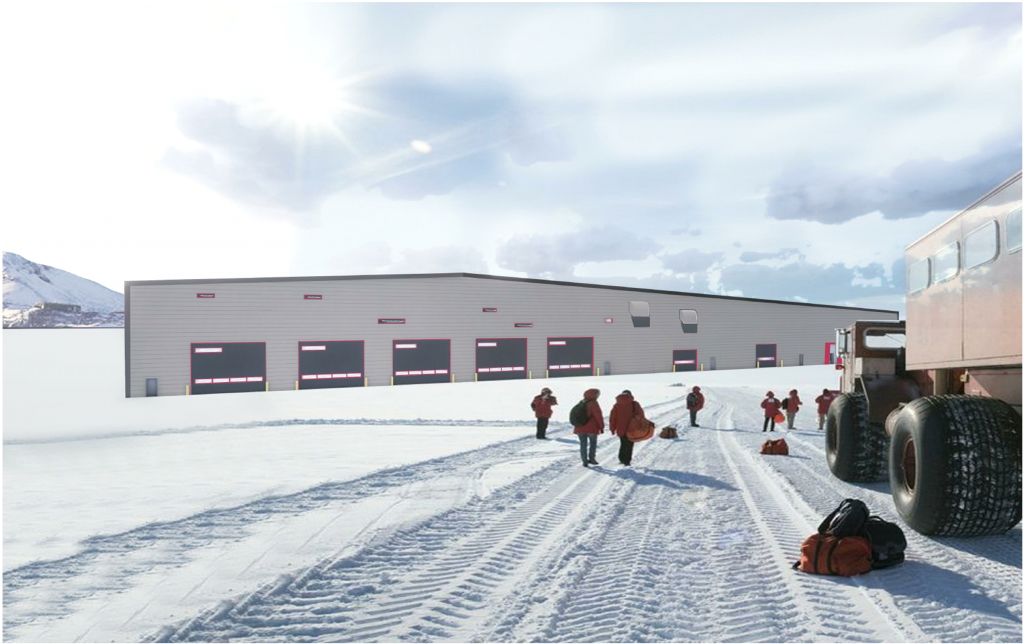
Stakeholder Needs
During the design process, the team capitalized on conducting charrettes with the multiple stakeholder groups that will use or manage the new facilities at McMurdo Station. This allowed them to tap into the extensive knowledge and experience of on-ice processes available and understand the needs of this unique project, both in the near term and over the long run.
These focused sessions proved invaluable. They enabled NSF to confirm through an iterative design review process that the design team had understood the collective requirements and had accurately and appropriately addressed each of the review comments. For the McMurdo Master Plan and the Core Facility, NSF received and addressed over 5,000 review comments from stakeholders, representing input from more than 45 different agencies and institutions.
Post-construction formal reviews will continue under “Independent Panel Reviews”—a program where subject matter experts evaluate project planning, design, fabrication methods, cost estimating, project management, logistics, and construction management. The four-member team has been invited annually by NSF to review project progress and provide feedback and recommendations on best practices that would reduce risk and ensure that the work stayed on track.
Advancing Understanding
Although the scope of AIMS has been adjusted since its initial vision, NSF remains committed to replace and improve the infrastructure in Antarctica and support great science at America’s three permanent research stations on the continent. A newly established Antarctic Infrastructure Recapitalization Program will include facilities that were originally part of AIMS. This important follow-on work is designed to ensure that facilities will be available to fulfill the mission and priorities of the United States Antarctic Program as they are established and evolve.
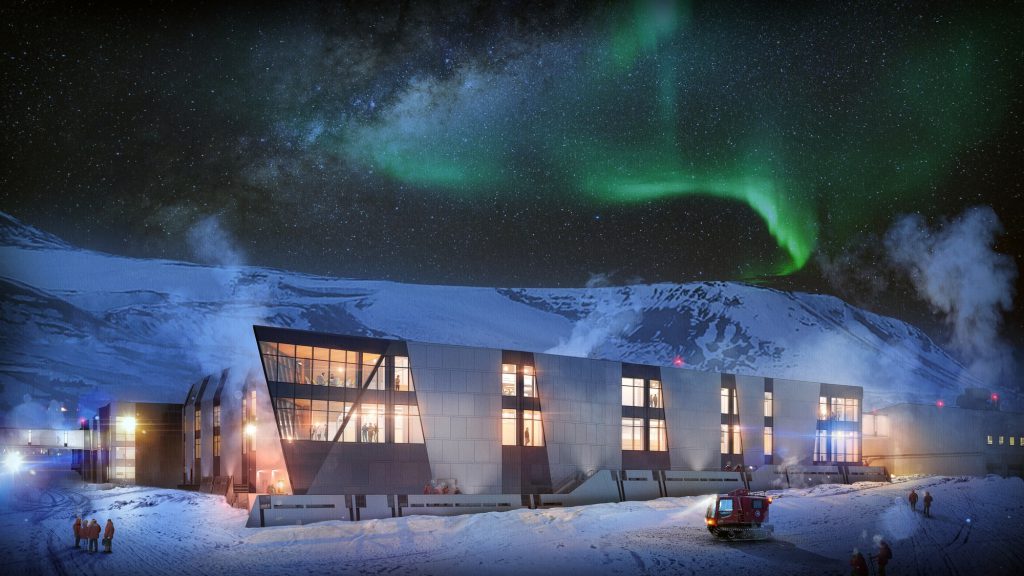
design process were key to gaining insights from users and tapping into the “on-ice” experience. RENDERING COURTESY OZ ARCHITECTURE
AIMS requires a significant financial investment. The cost of safely transporting personnel and equipment can be extremely expensive; and the costs of construction and maintenance of the new infrastructure will be similarly significant. However, despite these challenges, the benefits of the project make it a worthwhile investment for NSF, the United States, and the scientists and researchers they support. The entire effort, years in the making, is a testament to the power of collaboration and to the dedication of the international scientific community in the quest to advance our understanding of the world around us.
Lt. Col. Patrick Suermann, Ph.D., P.E., F.ASCE, F.SAME, USAF (Ret.), is Professor and Interim Dean, Texas A&M University School of Architecture; psuermann@arch.tamu.edu.
Col. Paula Loomis, Ph.D., AICP, LEED AP, F.AIA, F.SAME, USAFR (Ret.), is Director of Research, The Urban Collective; paula@urbancollaborative.com.
Capt. Dave Obermeier, P.E., PMP, CEM, CFM, M.SAME, USCG, is Industrial Manager, Coast Guard Yard, Md.; dave.j.obermeier@uscg.mil.
Ben Roth, AIA is Program Manager, National Science Foundation; broth@nsf.gov. Jeff Sims, P.E. is Senior Director Projects, Los Alamos National Laboratory; jsims@lanl.gov.
More News from TME
-
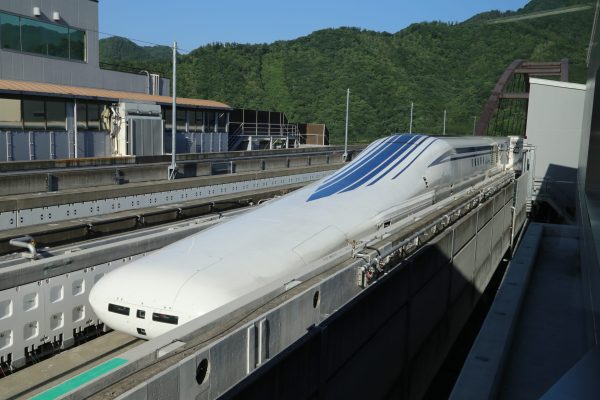
Developing a Maglev Network for National Defense
A transportation network leveraging superconducting magnetic levitation technologies would bring benefits for logistics, surface transportation, and energy storage, as well as strengthen national defense priorities and the defense industrial base. -
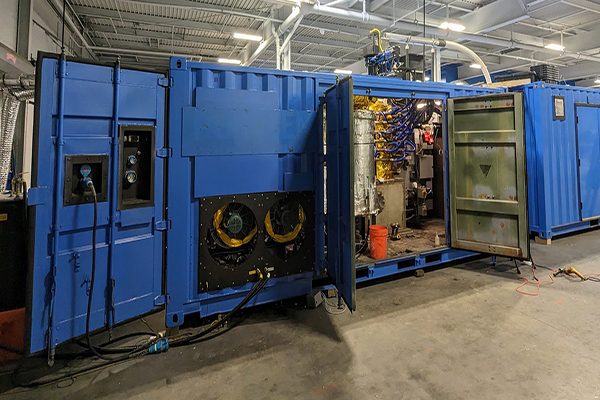
Reaching Sustainability Goals with Waste-to-Energy
The U.S. Army Engineer Research & Development Center’s Construction Engineering Research Laboratory is working to develop small-scale waste-to-energy systems that will advance installation sustainability and waste management. -
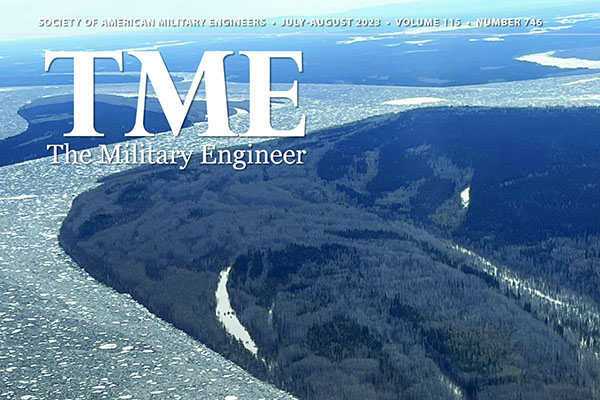
Announcing TME’s 2024 Editorial Calendar
TME’s 2024 Editorial Calendar is now available. Download it today and make your plans for article submission in 2024.